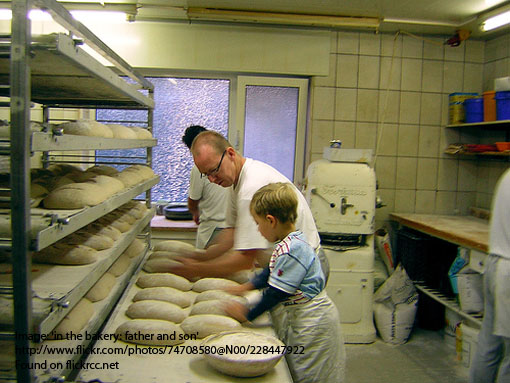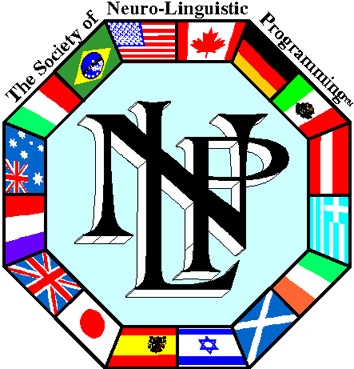What you need to know about
NLP Anchors
NLP techniques - NLP secret
- Setting Anchors -
- Stacking Anchors -
- Collapsing Anchors -
Human Behaviour
NLP anchors are relevant because we each develop our behaviour in response to various stimuli.
How often do you hear a particular piece of music and find yourself transported to another time and place that occurred perhaps many years ago?
Or perhaps you observe the smell of freshly baked bread and instantly recall an aunt or grandparent. These are powerful triggers which anchor the memories strongly within us.
But sometimes the behaviours triggered are unpleasant ones. Maybe the sight or sound of an aeroplane brings back to you the intensity of the ear pain you suffered as a child when the plane was taking off or descending. Those sorts of experiences may lead to anxiety states which are the subject of a different article on this site.

You can set anchors deliberately to help you manage your emotional state. It is helpful, of course, to have the assistance of a qualified NLP practitioner, but there is no reason why you shouldn’t try learning NLP anchoring yourself.
Criteria for setting NLP Anchors
To obtain the maximum effect when anchoring with NLP, the experience needs to be (i) unique and specific; (ii) anchored just as the response peaks (if it is subsiding, the effect will be weak); (iii) from time to time refreshed to avoid the experience fading away.
It is also possible to “stack” or “collapse” anchors.
Setting an Anchor in NLP
1 - Recall the state
Firstly, recall to mind the state you wish to re-experience. The more powerful the recollection of sheer bliss or excitement, the more powerful is likely to be the anchor.
For you it may be the first glimpse of your new born child, an intimate experience with a loved one, a very special social occasion, a sporting achievement or the sheer exhilaration of flying over the Grand Canyon or diving the Great Barrier Reef.

Each of us will have different experiences in entirely different circumstances, but for us they will be special.
2 – Recreate the experience and intensify it
As
far as possible, relive it in your mind. See what you saw. Double the
size of the picture and enhance the colour and brightness.
Hear what you heard. Turn up the volume. Feel what you felt and intensify the feelings. Concentrate carefully and notice the direction in which your feelings spin (forwards, backwards, left-to-right; right-to-left). Then spin the feeling faster and faster.
Bring the image closer and keep doubling the size until you are completely subsumed within it.
3 – Peaking the feeling
The
time to anchor the feeling is as it begins to peak. As it does so, for
example, firmly press the back of your hand or bring the thumb and
forefinger of one hand together. Then, just before the feeling begins
to subside let go before you feel the sense subsiding.
4 - Break the State
By “break the state”, we mean do
something else. For example, change your position or speak to someone
briefly. Then test the anchor by repeating the action of pressing the
back of the hand or bringing the thumb and forefinger of the hand
together (whichever it was). Notice, as you do so, that the original
response returns.
5 – Repetition
If the anchor is weaker than you would expect, repeat until it is reliably firm.
6 – Refreshing the NLP Anchor
If the anchor is well set, it will probably last quite a long time. Regular repetition will, however, ensure that it lasts.
Stacking Anchors
You can stack anchors by using the same trigger for several responses. The response should be more intensely experienced than any of them individually because it will be a synthesis of all the separate anchors.
Collapsing NLP Anchors
(i) Identify the preferred response
(ii) Identify the state you wish to change
It is essential, firstly, to identify the response
you would prefer for the unwanted response. Choose an occasion where
you experienced strongly the preferred state.
Then step into the memory and intensify it before anchoring it on one part of your body. Fire the anchor to make sure that the state is powerful and the NLP anchor is properly set.

Once you are satisfied that anchor is firmly in place, think of the state
you wish to change. As you re-experience the response, anchor it to
another part of your body. Fire the anchor and then break your state by
shifting position, talking etc.
Once
you have tested and made sure that each anchor is properly set, fire
both anchors simultaneously. The effect is usually one of mild
confusion. At this stage, hold the anchors until the confusion dissipates.
Then slowly lift the anchor of the unwanted state, and a few seconds later lift the anchor for the resource state.
Test by trying to trigger the unwanted response. Instead, your response should be more neutral or the resource state should dominate. Repeat as necessary until the resource state dominates.
Developing a set of NLP Anchors for important occasions
NLP concentrates on doing things that work. It is quite possible for you to develop a set of anchors for different occasions. Watch the runners just before the gun at an athletics meeting.
A number of them will be engaged in little rituals of their own and you can bet that most of them are firing anchors to get them into the desire state before the race begins.
Maybe your confidence needs boosting before making a public speech or you need to be able to perform at your best in other circumstances. NLP anchors enable you to build an effective tool box to deal with all occasions.
We mentioned earlier that music is a
strong anchor. I work away from home most of the time and I find that
my most vulnerable moment emotionally is when I first get on the train
or into the car.
So I have a playlist on my ipod which I label Anchor Music. They are all songs and tunes which take me to happy moments in my life. Once my earphones are on and the music starts, I feel settled and go on my way rejoicing.
Other life-changing NLP techniques you need to know about.
Related articles
For information about the powerful NLP state of spatial anchoring, you might care to consider reading this website page about How to hypnotise your audience.
You may also be interested to read the article Explaining NLP Anchors which describes how anchors naturally occur without our realising it often with powerful effect.
Gain FREE access to my self-confidence video
To gain free access to my self-confidence video enter your email address and first name in the box below. This will also keep you up-to-date with my free newsletter Inspirations.
As a bonus for subscribing you'll receive the first three chapters of my book Towards Success, where you can learn more about NLP techniques, from Anchors to Modelling, and my 50 favourite inspirational quotations.
The Secret of Mindpower & NLP Home
Return to Site Search & Contents Page

Change your life in just 5 weeks
Discover the pathway to success with my online video course. Learn more

Download NEW ebook Your Genius Within and find out how to uncover your own inner genius

NLP Articles
- Anchors
- Anchors explained
- Anger Management tips
- Anxiety Panic Attacks
- Beating disappointment
- Beating drug addiction
- Best self-help book
- Big events
- Body control module
- Body language attraction
- Body language flirting
- Body language in communication
- Body language interpretation
- Body language of a liar
- Body language signs
- Boost self-confidence
- Building Rapport
- Changing bad habits
- Changing beliefs
- Changing States
- Children
- Christmas (Holidays)
- Christmas & New Year greetings
- Chronic pain management
- Conquering Fear
- Crohn's Disease
- Cure for a Phobia
- Deal with your fear
- Deletion
- Determining your destiny
- Developing your senses
- Disaster to Triumph
- Distortion
- Drawing the line
- Embedded Commands
- Enthusiasm
- Exams
- Expecting the Best
- Expert Relationship Advice
- Eye accessing cues
- Fear of driving
- Fear of elevators
- Fear of flying
- Fear of the dentist
- Fear of vomiting
- Fear, Mental Blocks & Hesitation
- Fear, Uncertainty and Doubt
- Fight or flight response
- Finding Solutions
- Forever Worried?
- Friendly persuasion
- Generalisation
- Get the life you want
- Getting lucky
- Getting over your past
- Goal Setting Tips
- Goal Setting Tools
- Goal Setting Tools, More
- Great self-help books
- Grief
- Happy retirement
- Healthy Mind
- High blood pressure
- How long will I live?
- How to be lucky
- How to read body language
- Hypnosis & NLP
- Hypochondria
- Imagining perfect performance
- Improving speed reading
- Instant Mood Lift
- Interviews
- Knowing yourself
- Learn NLP
- Life Values
- Maintaining weight loss
- Make you thin
- Making it happen
- Managing change
- Meddling Mom
- Meeting People
- Mental rehearsal techniques
- Meta Model
- Metaphor
- Modelling
- Modelling Genius
- More NLP techniques for weight loss
- NLP Books
- NLP Courses
- NLP Practitioner Course
- NLP Master Practitioner Course
- NLP Secret
- NLP jargon buster
- NLP Modelling helped me
- OCD symptoms
- OCD treatment
- Overcoming low self-esteem
- Overcoming stage fright
- Pacing & Leading
- Persuasion
- Presuppositions
- Presuppositions (2)
- Problem solving
- Public Speaking
- Reaching agreement
- Reframing
- Self-confidence
- Self limiting beliefs
- Self-image
- Sportsmen Guide
- Stage fright tips
- Stammering
- States
- Stop binge eating
- Stop Smoking
- Subliminal Persuasion
- Success Principles
- Techniques for persuasion
- Techniques for weight loss
- The meaning of NLP
- Time & NLP
- Towards
- Towards & Away
- Ulcerative colitis
- Weight Loss
- Weight loss techniques
Articles on HYPNOSIS:
- Big events
- Conversational Hypnosis
- Covert hypnosis
- Deepening self-hypnosis
- Depression Hypnosis
- Handshake interrupt
- How to do self-hypnosis
- How to hypnotise your audience
- Hypnosis and Weight Loss
- Hypnosis NLP
- Hypnosis: Right or Wrong
- Hypnosis Stories
- Hypnotic language
- Hypnotism Stories
- Hypnosis story for you
- Hypnosis to quit smoking
- Instant self-hypnosis (age regression)
- Practical self-hypnosis
- Self-Hypnosis
- The Milton Model
Articles about THE SECRET of:
- Abundance Mentality
- Achieving more
- Beating Domestic Violence
- Being bothered
- Being Happy
- Best Self-help Book
- Conquering road rage
- Coping with criticism
- Dealing with pride
- Defeating stress
- Discover the secret of wealth
- Genius
- Getting off to sleep
- Getting over a break up
- Getting over your temper tantrum
- Health
- How to deal with grief
- Imagination
- Influence
- Love
- Making Money
- Managing others
- Memorising a Deck of Cards
- Memory
- My Success
- Organising Memory
- Overcoming tiredness
- Overcoming worry
- Perpetual energy
- Remembering
- Secret Law of Attraction books
- Sleeping well
- Speed Reading
- Super Memory
- Surviving a recession
- Surviving negativity
- The Secret Law of Attraction
- Towards
- Teachers of the Secret
- Waiting for God
- Wealth Building
- Weight Loss
Articles about RELATIONSHIPS:
- Beating domestic violence
- Body language flirting
- Expert relationship advice
- Healthy family relationships
- Hurt feelings
- Love
- Relationship problem advice
- Signs of true love
- The secret of getting over a break up
Articles on WEALTH:
Articles on WEIGHT LOSS:
- Best Weight Loss Plan
- Body control module
- Easy weight loss
- Hypnosis and Weight Loss
- Maintaining weight loss
- More NLP techniques for weight loss
- NLP techniques for weight loss
- NLP techniques to make you Thin
- NLP weight loss techniques
- Stop binge eating
- The Secret of weight loss
- Weight control help
- Weight loss tips
- Why have I lost weight?
Articles about COACHING:
- Barriers to effective communication
- Communication
- Executive Business Coaching
- Feedback
- Free interview tips
- Free Life Coaching
- Goal Setting Tips
- Goal Setting Tools
- Goal Setting Tools, More
- Life & Executive Coaching
- Personal Development Plan
- Problem solving
- Success Principles
- The Secret of my Success
- Time Management
Articles on GENIUS and MIND POWERS:
- Activating genius
- Become a genius
- How long will I live?
- Mind Powers
- Misty Reflections
- Modelling Genius
- The Secret of Genius
Articles about MEMORY:
Real Women of Genius Articles:
Real Men of Genius Articles:
- Abraham Lincoln
- Albert Einstein
- Antoni Gaudi
- Carl Jung
- Charles Darwin
- Charles Dickens
- Christopher Wren
- Confucius
- George Washington
- Hannibal
- Horatio Nelson
- Isaac Newton
- Julius Caesar
- Lawrence of Arabia
- Leonardo da Vinci
- Michelangelo
- Mohatma Gandhi
- Napoleon Bonaparte
- Nicolas Copernicus
- Oscar Wilde
- Rembrandt
- Robert Burns
- R L Stevenson
- Socrates
- Walt Disney
- William Shakespeare
- Wolfgang Amadeus Mozart
Articles on SECRET and INSPIRATIONAL TEACHERS:








New! Comments
Have your say about what you just read! Leave me a comment in the box below.